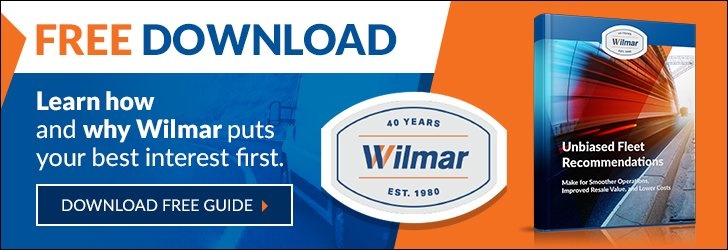
As a small or medium-sized business (SMB) owner managing company vehicles, safeguarding these assets is paramount to ensuring operational continuity and financial stability. Company vehicles are susceptible to theft, vandalism, and unauthorized use, resulting in substantial losses, including replacement costs, downtime, and increased insurance premiums.
This article outlines effective security measures and theft-prevention strategies tailored for SMB fleets, drawing on established best practices to mitigate risks and enhance protection.
Understanding the Risks of Vehicle Theft in Business Fleets
Vehicle theft remains a significant concern for commercial operations, with evolving trends underscoring the need for proactive measures. In the first half of 2025, the national average theft rate in the United States decreased to 97.33 per 100,000 residents from 126.62 in the prior year, indicating a nationwide decline.
However, cargo theft has surged, with 884 incidents reported in the second quarter of 2025 —a 13% year-over-year increase —often targeting high-value commodities through organized crime. Commercial vehicles, including trucks and vans, are particularly vulnerable at night or in unattended locations, with thefts frequently involving not only the vehicles themselves but also valuable equipment and cargo. These incidents can escalate costs, as businesses face disruptions and potential liability issues.
Physical Security Measures
Implementing robust physical deterrents forms the foundation of vehicle security. Steering wheel locks, such as the Tevlaphee model, physically prevent unauthorized operation by securing the wheel and brake, serving as a visible deterrent to potential thieves.
Wheel locks and boots, like those from Rimgard or Proven Industries, immobilize vehicles by clamping onto wheels, making them difficult to move without specialized tools. For catalytic converter protection—a common target in commercial fleets—devices like the CatClamp provide steel guards to prevent quick removal. Additionally, securing cargo with reinforced locks on trailers and compartments reduces the appeal of theft by increasing the effort required.
Technological Solutions for Enhanced Protection
Advancements in technology offer sophisticated tools for monitoring and securing fleet vehicles. GPS tracking systems, such as those integrated with telematics platforms, enable real-time location monitoring, geofencing alerts, and remote immobilization, allowing fleet managers to respond swiftly to suspicious activity.
Electronic immobilizers and kill switches, including remote battery disconnects like the Feiton model, prevent engine startup without proper authorization, adding a layer of defense against keyless entry exploits. Alarm systems equipped with motion sensors and visible decals further deter intruders, while comprehensive solutions, such as StarLine telematics combined with IGLA immobilizers, provide maximum protection for high-risk fleets. These technologies not only prevent theft but also facilitate recovery, with systems like LoJack integrating with law enforcement for efficient tracking.
Operational Best Practices and Employee Training
Beyond hardware, operational protocols are crucial for theft prevention. Establish fleet management policies that include parking vehicles in well-lit, secure areas with surveillance, and removing or locking up valuable equipment when not in use. Driver training programs should emphasize vigilance, such as varying routes for high-value cargo and conducting pre-trip inspections to identify vulnerabilities.
Implementing behavior-based strategies, such as using telematics to monitor driver behavior and enforce security protocols, can further reduce risks. Regular audits of vehicle usage and maintenance ensure that security features remain functional, fostering a culture of accountability among employees.
Insurance Implications and Recovery Strategies
Adequate insurance coverage complements security measures, and many policies offer discounts for installed anti-theft devices, such as alarms and trackers. In the event of theft, comprehensive documentation—including vehicle details, security features, and incident reports—expedites claims processing.
Collaborating with organizations like the National Insurance Crime Bureau (NICB) can aid recovery efforts by providing resources for reporting and tracking stolen assets. Proactive measures not only lower premiums but also minimize the financial impact of theft, ensuring business resilience.
Conclusion
Vehicle security and theft prevention require a multifaceted approach that integrates physical deterrents, advanced technologies, and rigorous operational practices to protect SMB fleets effectively. By adopting these measures, business owners can significantly reduce risks, safeguard assets, and maintain operational efficiency.
For further guidance on fleet management solutions, consult resources available on wilmarinc.com or engage with security professionals to tailor strategies to your specific needs.







